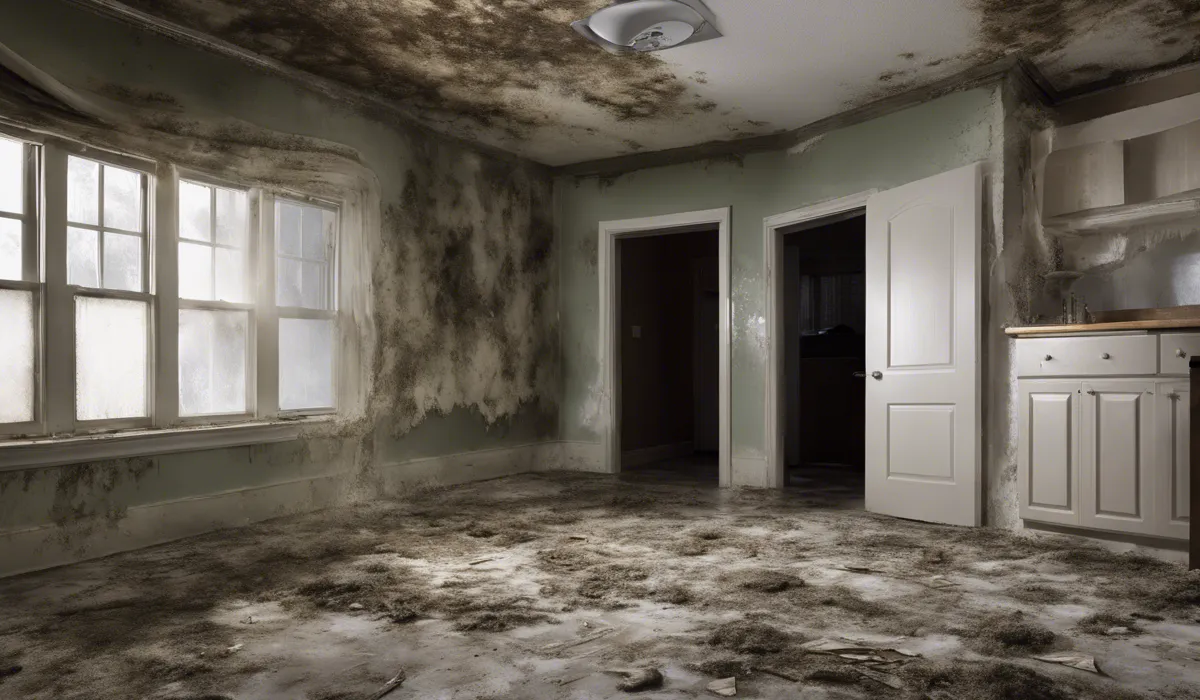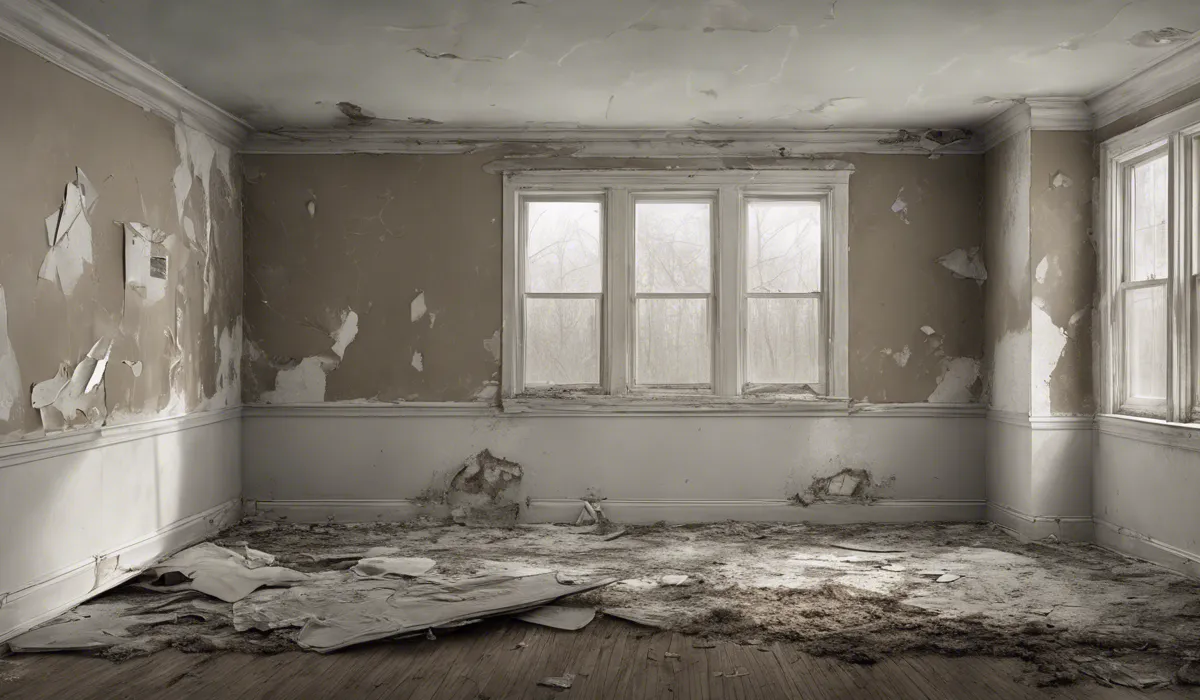House mold can be dangerous, especially to those with allergies or compromised immune systems. It can cause respiratory issues, skin irritation, and other health problems. Certain types like black mold are particularly harmful. Prompt removal and moisture control are essential for safety.
What is House Mold and How Does It Grow?

Definition of House Mold
House mold is a type of fungus that can grow indoors. It comes in various shapes, sizes, and colors, often appearing as spots or patches.
Mold thrives in damp environments, reproducing through tiny spores that travel through the air. When these spores land on wet surfaces, they begin to grow and can become a problem in your home.
Types of Common Household Molds
There are several types of mold that commonly appear in homes.
Some of the most prevalent include Aspergillus, which is often found on food and in air conditioning systems; Cladosporium, which can grow in both cool and warm areas; and Penicillium, which is known for its blue or green appearance on food.
Black mold, or Stachybotrys chartarum, is particularly infamous due to its potential health risks and is usually found in areas with high moisture.
Conditions That Promote Mold Growth
Mold growth in homes occurs under certain conditions. Primarily, mold needs moisture, warmth, and food to grow.
High humidity, leaky pipes, and poor ventilation create perfect environments for mold. Materials such as wood, paper, carpet, and insulation offer food sources that allow mold to flourish.
Typical Locations for Mold in the Home
Mold often appears in places where moisture is present. Bathrooms, kitchens, basements, and attics are the most common areas.
It can hide behind walls, under floors, and above ceiling tiles. These areas should be checked regularly for signs of mold growth, such as discoloration or a musty odor.
Health Implications of Mold Exposure

Short-term Effects on Health
Exposure to mold can cause various short-term health issues. These often include allergic reactions like sneezing, runny nose, red eyes, and skin rash.
People can also experience asthma attacks or difficulty breathing if they are sensitive to mold spores.
Long-term Health Risks
Long-term exposure to mold can lead to more severe health problems. It can cause persistent respiratory issues and may even contribute to the development of asthma in children.
Prolonged exposure has been associated with respiratory infections and may exacerbate conditions like chronic obstructive pulmonary disease (COPD).
Vulnerable Populations
Certain groups of people are more at risk when it comes to mold exposure. Children, the elderly, and individuals with respiratory conditions like asthma or allergies can experience more severe reactions to mold.
People with weakened immune systems are also more susceptible to mold-related health problems.
Symptoms of Mold Exposure
Recognizing the symptoms of mold exposure is important for early intervention. These symptoms often mimic those of a cold or hay fever and can include coughing, wheezing, throat irritation, and headaches.
It is crucial to pay attention to these signs, especially if they persist or worsen over time.
Mold-related Illnesses
Certain illnesses can be directly linked to mold exposure. These include allergic reactions, asthma exacerbations, and hypersensitivity pneumonitis, an inflammation of the lungs.
In extreme cases, exposure to toxic mold like black mold can lead to neurological problems and, in rare instances, death.
Prevention and Remediation Strategies

Tips for Reducing Humidity and Limiting Mold Growth
Keeping indoor humidity levels between 30-50% can significantly reduce the potential for mold growth.
Use dehumidifiers in damp areas, ensure proper ventilation in bathrooms and kitchens, and fix leaks promptly.
Regularly checking pipes and roofs for damage can also prevent water accumulation that leads to mold.
Cleaning and Maintenance Practices to Prevent Mold
Cleanliness is key in preventing mold. Clean and dry any wet areas within 24-48 hours to prevent mold from taking hold.
Use mold-killing products in bathrooms and other prone areas. Keep the home well-maintained by cleaning gutters, ensuring downspouts direct water away from the house, and checking ventilation systems.
Professional Mold Remediation
If mold infestation is extensive, professional remediation may be necessary. Professionals have the tools and expertise to safely remove mold and contaminated materials.
They also have the ability to identify and rectify the underlying moisture problem that caused the mold growth.
When to Call a Professional?
You should call a professional if the mold covers a large area or if you have health concerns that make it unsafe to handle the mold yourself.
If you suspect mold is in your HVAC system or if you’ve had recent water damage, a professional can help ensure that your home is thoroughly cleaned and safe.
Preventing Mold Recurrence After Treatment
After remediation, it’s important to take steps to prevent mold from returning. Monitor humidity levels, continue to fix leaks promptly, and use mold-resistant products when possible.
Regular inspections and maintenance can help keep your home mold-free and protect the health of you and your family.
FAQs About House Mold Dangers
Is house mold dangerous to everyone?
House mold can pose health risks to everyone, but it is especially dangerous for individuals with allergies or compromised immune systems, potentially causing respiratory issues and skin irritation.
What health problems can house mold cause?
House mold can lead to various health problems such as respiratory issues, skin irritation, allergic reactions, and in some cases, more serious health complications.
Is black mold more harmful than other types of mold?
Yes, black mold (Stachybotrys chartarum) is particularly harmful and can produce toxins that may lead to severe health issues.
How quickly should mold be removed from a house?
Mold should be removed promptly upon discovery to minimize health risks and prevent further growth and contamination.
What is the best way to prevent mold dangers in the house?
Controlling moisture levels and fixing leaks are essential to prevent mold growth. Regular cleaning and adequate ventilation can also help reduce the risk of mold in homes.
Final Thoughts
House mold poses a significant health risk, particularly to those with allergies or weakened immune systems.
It can lead to respiratory problems, skin irritation, and other serious issues. Certain varieties, such as black mold, are notably toxic.
Addressing mold promptly through removal and managing indoor moisture is critical for maintaining a safe living environment.
